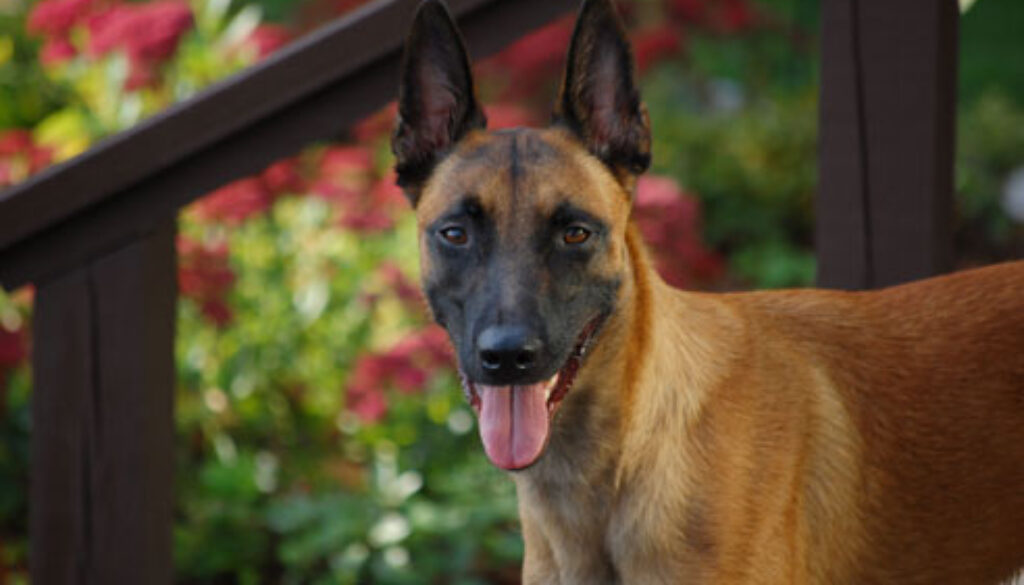Dock Diving: Competitive, Rewarding, and Fun
Some were just born to be an athlete.
It’s in your blood, it’s in your genes – and in the case of Ranger – his breed.

You see, Ranger is a Belgian Malinois, known for their prowess as police dogs, rescue dogs and in service alongside our celebrated Navy Seals. In fact, it’s been reported that a Malinois was a part of Seal Team Six that took out Osama Bin Laden.
A lot of dogs have a whole lot of energy, but Malinois take it to a whole other stratosphere. It’s that kind of thirst for excitement and adrenaline that makes Ranger a real player in the growing sport of dock diving.
“They are real athletes, they really need to do a job,” said owner/trainer Susan Herskowitz about the breed. “Having a Malinois is not for everyone. It’s like learning to drive on a Ferrari. It’s not for the average dog owner who just wants a pet.”
Herskowitz is a newcomer to the dock diving universe. A former architect in New York City who escaped the corporate grind to follow her passion as a specialist in Uranian Astrology, she now consults with clients from around the world out of her Great Barrington home where she’s lived since 2004.
She’s been an owner of a Malinois, Ysa, for the past three years. Ranger was a rescue dog who joined the family last year. But early on it was clear that Ranger (who is also a therapy dog) “had to do something with his energy,” according to Herskowitz.
Dock diving has become that outlet.
“He’s a contender, but dock diving is very much a team sport,” she said.
Like a game of fetch, Ranger’s jump height and direction is heavily influenced by the location of the tossed moving target or “bumper,” which is basically a toy.
Susan’s throw has to be just right. It’s about timing and physics to toss the toy for optimal distance and height. To fully understand this, you first have to visualize the layout of the dock diving playing field (or, pool). Picture a rectangular above ground pool that is 40 feet in length and 20 feet in width. At the far end is a 40-foot long dock that serves as essentially a launching pad for well-trained canine projectile missiles, driving down the dock and catapulting toward an air-born toy that sails above the water.
“Everyone’s got a method for how they get distance from their dog. With Ranger, he’s so fast, the release of the toy has to be quick,” she said. “You want them to follow the toy in the air, but just in front of them where they are really reaching and stretching for that toy.”
As most of the dock diving athletes and trainers, Ranger takes advantage of the entire length of the dock to build velocity and momentum, like an Olympic long-jumper gathering speed on the strip to liftoff from the board to the sand pit.
The difference, of course, is motivation.
While the long-jumper dreams of breaking a world record, standing at the top of the podium and achieving greatness, Ranger’s goal is much more simple.
“All Ranger cares about is that ‘I want that toy’ and I’m going to do whatever I can to get it,” she said. When a dog has excellent “toy drive,” Herskowitz said “they will contort themselves to catch a bad throw.”
By no means does the dog’s simple motivation diminish the thrill and excitement experienced both by the athlete and trainer. In fact, it’s that “full engagement” that Susan says makes it all worth it.
“It’s fun for me because I love to see him excited. It’s definitely engaging for both of you. You sort of lose all space and time when you’re in the moment.”
Still, this is a competition and it’s all about striving to be better – even if it’s simply competing to break your own personal record.
So, how do you get there? Well, it takes training. But, again, effective training for a dock diving athlete means understanding Ranger’s motivation.
According to Susan, in practice, you can’t simply toss the toy out farther and higher out of reach to achieve results. Like any goal that becomes unattained time after time, literally out of reach, the dog will lose hope of catching the toy in the air, reduce the height of their jump – which in turn – will shorten the measured length in the pool.
Instead, Susan trains Ranger with shorter tosses where he can catch the toy, which boosts his confidence that he’ll be able to catch it in the air.
In other words, while a successful dock diving team is made up of strong athletics, psychics and mechanics, a significant piece of the formula also includes Skinner-style behavioral psychology.
But, let’s not get too nerdy. In the end, this is about all the fun pet owners (and their pets) have playing a simple game of fetch. Well, maybe this is more like a game of fetch – on steroids.
Either way, for Susan it’s difficult to describe what the sport has meant to her and Ranger.
“It’s sort of an intangible thing. It’s a connection, it’s a love, it’s a trust, it’s an exchange of energy,” Herskowitz said. “It’s hard to define, we are both really satisfied.”
- Ranger and Susan find the sport rewarding, and enhances their bond
This article originally appeared in the publication, Animal Life: Tri-State Berkshire Pet News, and on its website: animallifeonline.com.
John Krol is president of OneEighty Media, Inc. a full-service marketing and advertising firm, specializing in branding, communications, content development for all forms of media, including but not limited to: print, web, social media, video for web and television and radio.



